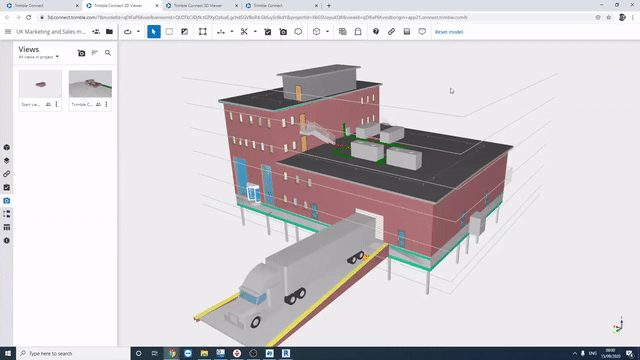5 Benefits Of Building Information Modeling (Bim) In Facility … – Questions
Building info modeling (BIM) is a process supported by different tools, technologies and contracts including the generation and management of digital representations of physical and functional qualities of places.https://karnoenergy.com/bim-architectural-detailing-services/ Building details designs (BIMs) are computer system files (typically however not constantly in exclusive formats and containing exclusive information) which can be extracted, exchanged or networked to support decision-making regarding a built possession.
The idea of BIM has remained in development given that the 1970s, however it only became a predetermined term in the early 2000s. bim modelling. Development of requirements and adoption of BIM has advanced at various speeds in different nations; requirements developed in the United Kingdom from 2007 onwards have actually formed the basis of international basic ISO 19650, launched in January 2019.
The first software application tools established for modelling structures emerged in the late 1970s and early 1980s, and included workstation items such as Chuck Eastman’s Building Description System and GLIDE, RUCAPS, Sonata, Reflex and Gable 4D Series. The early applications, and the hardware required to run them, were pricey, which restricted extensive adoption.
The term ‘Structure Information Design’ first appeared in a 1992 paper by G.A. van Nederveen and F. P. Tolman. Nevertheless, the terms ‘Building Details Design’ and ‘Structure Details Modeling’ (including the acronym “BIM”) did not end up being widely utilized up until some 10 years later on. In 2002, Autodesk launched a white paper entitled “Structure Info Modeling,” and other software application suppliers also started to assert their participation in the field.
Helping with exchange and interoperability of information in digital format had actually previously been used under varying terms by Graphisoft as “Virtual Structure”, Bentley Systems as “Integrated Job Designs”, and by Autodesk or Vectorworks as “Structure Information Modeling”. The pioneering function of applications such as RUCAPS, Sonata and Reflex has been acknowledged by Laiserin in addition to the UK’s Royal Academy of Engineering.


These applications differ from architectural preparing tools such as AutoCAD by permitting the addition of further information (time, cost, makers’ details, sustainability, and maintenance information, and so on) to the building model. As Graphisoft had actually been establishing such options for longer than its rivals, Laiserin concerned its ArchiCAD application as then “among the most mature BIM services on the market.” Following its launch in 1987, ArchiCAD ended up being concerned by some as the very first application of BIM, as it was the very first CAD item on a computer able to create both 2D and 3D geometry, along with the very first commercial BIM product for desktop computers (bim modelling).
To achieve interoperability between applications, neutral, non-proprietary or open requirements for sharing BIM data amongst different software application applications have actually been established (bim modelling). Poor software application interoperability has actually long been regarded as an obstacle to market performance in general and to BIM adoption in particular. In August 2004 an US National Institute of Standards and Innovation (NIST) report conservatively estimated that $15.
capital facilities industry due to inadequate interoperability emerging from “the highly fragmented nature of the industry, the industry’s continued paper-based business practices, a lack of standardization, and irregular innovation adoption amongst stakeholders”. An early BIM standard was the CIMSteel Combination Standard, CIS/2, a product model and information exchange file format for structural steel job information (CIMsteel: Computer Integrated Manufacturing of Constructional Steelwork).
The Basic Principles Of 5 Benefits Of Building Information Modeling (Bim) In Facility …
It was established by the University of Leeds and the UK’s Steel Building Institute in the late 1990s, with inputs from Georgia Tech, and was authorized by the American Institute of Steel Construction as its data exchange format for structural steel in 2000 – bim modelling. BIM is frequently related to Industry Foundation Classes (IFCs) and aecXML data structures for representing information established by buildingSMART – bim modelling.
Construction Operations Building info exchange (COBie) is also connected with BIM. COBie was created by Expense East of the United States Army Corps of Engineers in 2007, and assists capture and record equipment lists, product information sheets, warranties, spare parts lists, and preventive upkeep schedules. This info is used to support operations, upkeep and possession management when a constructed asset is in service (bim modelling).
COBie has actually been incorporated into software, and might take several types consisting of spreadsheet, IFC, and ifcXML – bim modelling. In early 2013 BuildingSMART was dealing with a lightweight XML format, COBieLite, which appeared for review in April 2013. In September 2014, a code of practice regarding COBie was released as a British Standard: BS 1192-4.
UK BS and PAS 1192 specs form the basis of more parts of the ISO 19650 series, with parts on possession management (Part 3) and security management (Part 5) released in 2020 (bim modelling). The IEC/ISO 81346 series for recommendation designation has released 81346-12:2018, likewise called RDS-CW (Referral Classification System for Building Works).

 Auctioneers
Auctioneers Shopping Mall
Shopping Mall Money Lenders
Money Lenders